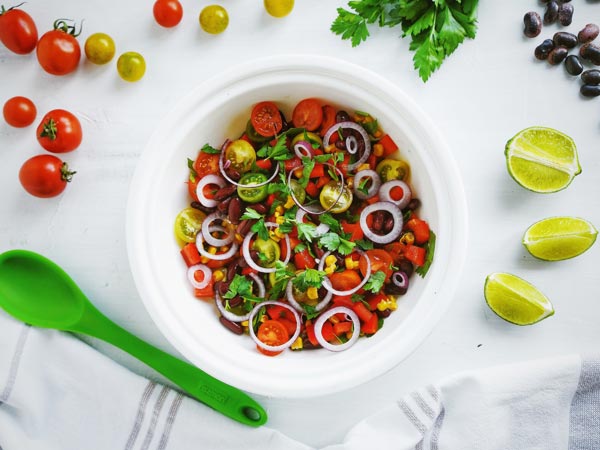
Interpretation of the Australia-China Free Trade Agreement
What does the Australia-China Free Trade Agreement Contain?
When the China Australia Free Trade Agreement was officially signed? When the China Australia Free Trade Agreement begin to take effect? How was the process of the free trade negotiations between the China and Australia over the last decade? What has been completed between the completion of the free trade negotiations and the final signing of the agreement?


The Annual Report of the Import of Services in China
The Ministry of Commerce of China
The Rapid Development of the Import of Services in China In 2017, the total amount of the import of services in China was US$467.59 billion. This represents a year-on-year increase of 3.4%, a 230-fold increase when compared to 1982, shortly after the adoption of the market economy policy in China. At the beginning of the economic reform in the 1980s, service trade in China was in its infancy.
Status and Development of China's Small and Medium Enterprises
Development Status, Status and Role of Chinese SMEs
According to the SME Standards formulated by the State Planning Commission, the Ministry of Finance, and the National Bureau of Statistics, small and medium-sized enterprises must meet the following conditions: the number of employees is less than 2,000, or the sales is less than 300 million RMB, or the total assets are less than 400 million RMB.


Development Status and Trend of China Fruit Trade
Fruit is the third largest trade surplus in China's agricultural trade after vegetables and aquatic products. In recent years, production costs have continued to rise, and market and policy environments have changed significantly. China's fruit trade development faces a series of challenges. Since joining the WTO, China's fruit trade has developed rapidly. From 2001 to 2015, the value of fruit exports increased from US$800 million to US$6.89 billion, with an average annual growth rate of 16.7%.
Chinese Wine Consumption Trends
In the first half of 2017, China's wine imports were 254 million litres, a year-on-year increase of 13.9%, while the total wine imports reached 1.146 billion US dollars (about RMB 7.731 billion), an increase of 3.34% year-on-year. Regardless of import value or volume, France is China's largest wine importer, with a market share of more than 40%. In the first half of this year, China imported 98.32 million litres of French wine and imported 485.1 million US dollars (approximately RMB 3.273 billion).


Competition and Development Trends of Complementary Food Industry in China
In recent years, with the continuous improvement of the consumption capacity of Chinese residents and the deepening of the concept of scientific parenting, the scale of complementary foods for infants and toddlers has continued to rise. In addition, in recent two years, China's infant supplementary food policies and regulations have been frequently revised, and food supplement production has been effectively guided. Supplementary food business management has also been strengthened. In 2018, known as the first year of the Chinese supplementary food industry, the baby supplementary food industry has undergone development and upgrading, and it has also undergone reorganization. As the main body of the mother and infant industry, the growth rate of milk powder has slowed down, and driven by consumer demand, the supplementary food market has continued to grow. In the choice of supplementary foods, consumers are more inclined to import brands. At the same time, after the implementation of the new food supplement policy, the industry has accelerated the survival of the fittest, but the current low-end market in China still has products of different qualities. In the high-end market, only a few companies have established a good image of infant food supplement brands through differentiation and branding and have gained high market share.
China's Senior Food Market
Since the implementation of the second child policy, the fertility rate in China has not been as good as expected, but China's aging population is deepening at a rapid pace. According to the 2014 National Economic and Social Development Statistical Bulletin of the National Bureau of Statistics, China ’s 1.367 billion population Among them, 212 million were aged 60 and over, accounting for 15.5% of the total population; 137 million were aged 65 and over, accounting for 10.1%. According to the common international view, when a country or region has an elderly population of 60 years or older, accounting for 10% of the total population, or an elderly population of 65 years or older accounts for 7% of the total population, it means that the population of this country or region is in an aging society. At the current rate of aging in China, 30% of the country's population will be elderly in 2030. From a market perspective, the silver-haired economy that cannot be underestimated is followed, but the domestic market development in this area is still stuck in the "health products" field, and the nearly 200 million people over 65 years old Demand for aged foods is increasing.


Analysis of Channel Characteristics of China's Organic Food Market
In recent years, China's output and consumption of organic food have continued to increase, ranking fourth in the world's organic market. The top three are the United States, Germany, and France. In China, consumers are increasingly biased towards natural, organic and low-calorie products, while also considering fat content, carbohydrates, sodium and sugar. Domestic consumers are more eager to make food ingredients more transparent, and are paying more and more attention to the words on food packaging and labels, clarifying the food's origin, cold chain logistics, nutritional content, production date and expire date and other factors. Among the best-selling organic foods are cooking oil, fresh milk, pork, chicken and beef. In China, the state's support for organic agriculture, the promotion of rural e-commerce, and the high consumer demand for food quality will drive the continued growth of organic food. It is estimated that by 2024, China's organic food sales will reach 76.8 billion yuan.
Development Trends of E-Commerce in 2019 from Online Retail in China
Since 2013, with the slowdown in the growth of the national retail industry, e-commerce, including online retail, has maintained a rapid growth trend, and the application area of e-commerce has continued to expand and deepen. The rapid growth of China's e-commerce comes from the fact that Chinese business users and consumers have gradually increased their acceptance of the Internet and online shopping. Traditional enterprises have entered the e-commerce industry on a large scale, and online sales activities have continued to increase. With the increasingly perfect national regulatory system, increasing policy support, and the maturity of e-commerce companies and consumers, China's e-commerce will usher in a better development environment. It is expected that China's e-commerce will continue to maintain a high growth rate, and the average annual compound growth rate from 2014 to 2020 will remain above 20%. With the rapid development of e-commerce, more and more traditional industries are involved in e-commerce, for example, the application of e-commerce in agriculture to explore the traceability of agricultural product information.
